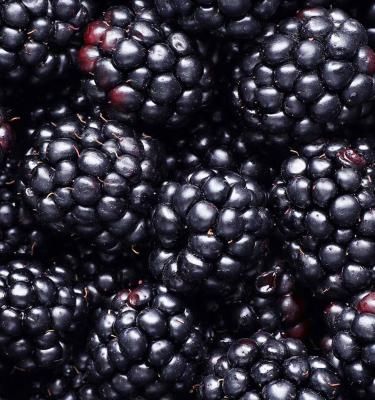

How to grow & care for Blackberries
Blackberries sometimes get a bad wrap thanks to the wild, thorny, weedy ones! But growing blackberries in your garden is both easy and rewarding. The good news is that thornless varieties of blackberry are readily available to home gardeners and they are much more manageable than their thorny relatives.
Blackberries will need a full sun spot with plenty of room to grow. It will make pruning and maintenance easier if they are trained to grow along a sturdy trellis or wire fence.
Depending on which varieties you choose to grow a blackberry plant or 2 could see you in fresh berries from November to April.
Top 5 steps to growing blackberries
- Choose a full sun spot with rich free draining soil or grow in a large pot
- Blackberries will require support to grow - sturdy horizontal wires or a wire fence are ideal.
- Improve the soil before planting with Scotts Performance Naturals Organic Based Soil Improver and Scotts Performance Natural All Purpose Organic Based Fertiliser
- Grow the thornless varieties of blackberries - they are much easier to pick and maintain
- Blackberries fruit on second-year growth, in winter prune all canes that fruited in the current season off at ground level.
Shopping List
- Blackberry potted plant or bare-rooted plant
- Scotts Performance Naturals Organic Based Soil Improver
- Scotts Performance Natural All Purpose Organic Based Fertiliser
- Garden trowel
- If growing in containers you’ll need a large pot or planter plus Scotts Performance Naturals Premium Organic Based Potting Mix if growing in a pot
Prepare
Choose a full sun spot and have the support structure installed before you plant to avoid disturbing roots later on. The best time to plant blackberries is in winter when the plants are dormant and easier to handle.
Dig the hole for your blackberry twice as wide as the original pot or root ball and at the same depth. Loosen the original soil at the bottom of the planting hole and mix Scotts Performance Naturals Organic Based Soil Improver and Scotts Performance Natural All Purpose Organic Based Fertiliser through the backfill soil and the soil at the base of the hole.
Planting in the garden
Plant blackberries into prepared soil, at the base of your support structure. Make sure the crown of the plant is at ground level and not below.
If growing more than one blackberry, plant them 1-2 metres apart. Water in new blackberries to settle their roots in.
Feed in spring with Scotts Performance Natural All Purpose Organic Based Fertiliser at the recommended rate. Mulch around the root zone of your blackberry with an open organic mulch to retain moisture and suppress weeds.
In winter prune all canes that fruited in the current season off at ground level - blackberries fruit on second-year growth.
Planting in pots
Growing blackberries in large pots or containers can be a great way to contain their roots which do have a habit of suckering.
Choose a pot that is at least 50cm deep by 50cm wide. Fill the pot with Scotts Performance Naturals Premium Organic Based Potting Mix - remove the blackberry plant from the nursery pot and place it in the centre of the pot, backfill around the root ball and water it in well.
At the time of planting add a support structure or wire cage to support the plant as it grows. Alternatively, the pot can be placed up against a sturdy wire fence and the blackberry tied onto this as it grows.
Feed in spring with Scotts Performance Natural All Purpose Organic Based Fertiliser at the recommended rate. Apply an open organic mulch over the surface of the potting mix to retain moisture and suppress weeds.
In winter prune all canes that fruited in the current season off at ground level - blackberries fruit on second-year growth.
Harvest
Newly planted blackberry plants can take 2-3 years before they begin fruiting.
Blackberries are ready to harvest when they’ve turned a deep burgundy/purple colour and taste sweet. Pick ripe fruit, leave the unripe fruit for another day, and harvest once it ripens.
Blackberries will not ripen off the plant, so they should be picked when ripe.

Pests & Diseases
Protect your blackberry harvest from hungry birds and wildlife by using wildlife safe netting over the whole plant.
To reduce the risk of fungal or bacterial diseases occurring on the leaves, avoid watering the leaves of your blackberries.



